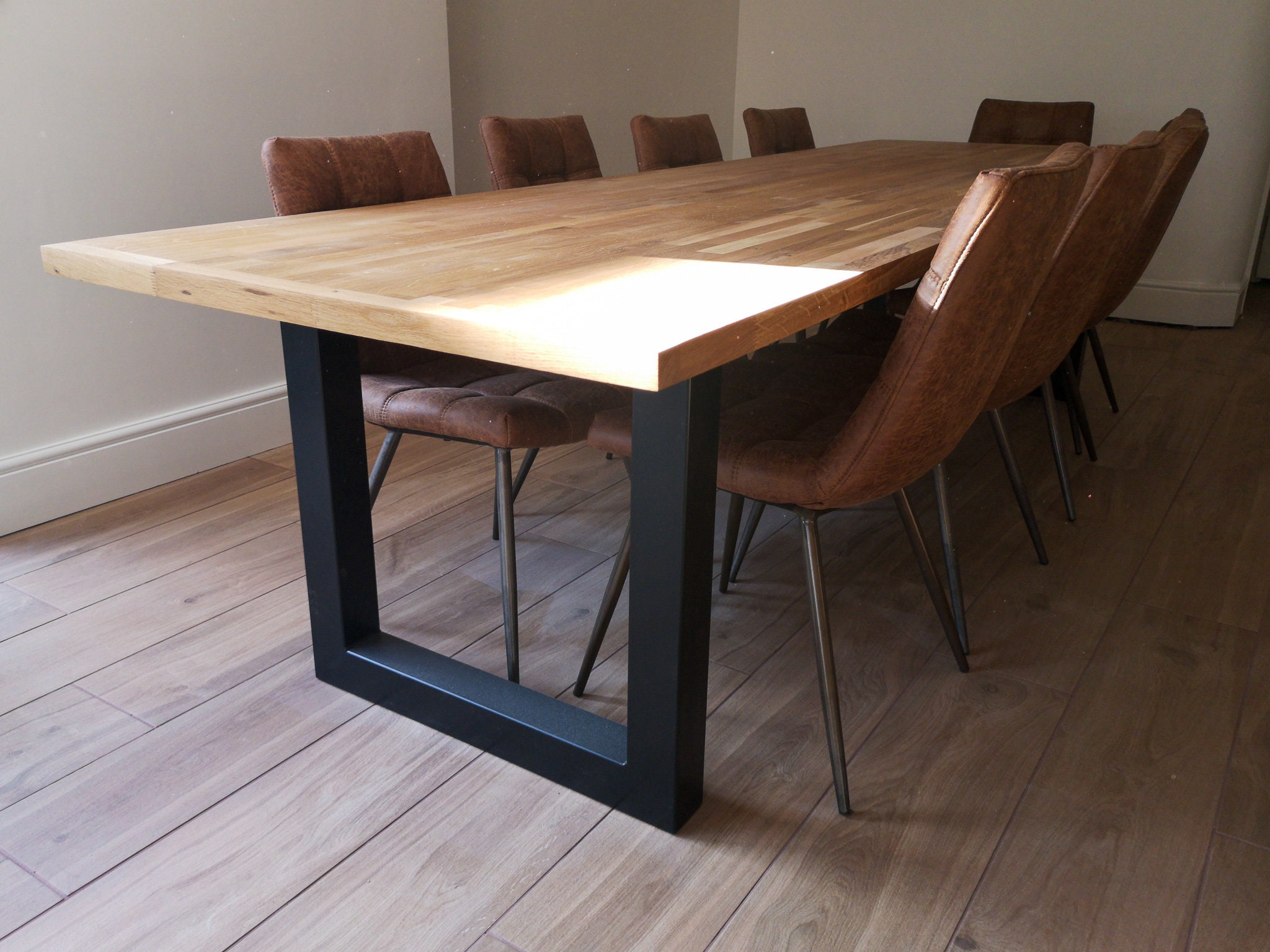Dining Room Table Legs: What to Think about Before You Acquire
Dining Room Table Legs: What to Think about Before You Acquire
Blog Article
A Detailed Take A Look At Table Leg Styles: Finding the Perfect Suit
Selecting the best eating table leg design is vital for both aesthetic appeal and practical capability. Conventional four legs provide classic elegance and stability, while the stand base offers raised legroom and a modern-day appearance. For those with larger tables, trestle legs make sure strong support, whereas barrette legs present a mid-century contemporary vibe with their minimal style. The x-shaped legs blend modern design with boosted stability. Each of these options brings unique benefits, making the selection greater than just a matter of choice. Explore better to find which design flawlessly complements your dining room and way of living.
Typical Four Legs
Among the various types of dining table leg designs, the typical four-leg layout continues to be an ageless option for numerous homes. Four legs offer balanced support, making sure the table continues to be steady and capable of bearing significant weight (dining room table legs).
From an aesthetic point of view, the typical four-leg layout can be quickly adapted to various interior styles. Whether crafted from wood, metal, or a mix of materials, these legs can be elaborately sculpted, streamlined and minimalistic, or anything in between. Their adaptability enables them to complement both rustic and modern settings perfectly.
Furthermore, the uncomplicated framework of the four-leg layout helps with ease of activity and positioning within a space. Unlike more facility bases, this style decreases blockages, supplying ample legroom for restaurants. In summary, the typical four-leg table leg style weds enduring elegance with functional functionality, making it a sharp choice for those looking for both form and function in their eating furniture.
Stand Base
Typically commemorated for its sophisticated and space-efficient design, the stand base is a prominent choice to the standard four-leg arrangement in dining table leg designs. This distinctive base generally includes a single central column sustaining the tabletop, which can vary in kind, from ornately carved wood to streamlined, modern steel. One of the main advantages of the pedestal base is its capacity to maximize legroom and seating versatility. Without edge legs, restaurants are managed better freedom of motion, making it an ideal option for round and oblong tables that advertise even more intimate and comprehensive celebrations.
Additionally, the stand base's main assistance can take care of substantial weight, allowing for using heavier tabletops, such as marble or thick hardwood. This toughness coupled with its aesthetic flexibility makes the pedestal base a popular choice in both conventional and contemporary interior settings. It can perfectly integrate with different design themes, from classic elegance to minimalist modernity. The central column itself offers a canvas for elaborate styles and artistic expressions, including a component of visual interest under the table. In recap, the stand base integrates functionality with style, making it an improved and functional choice for diverse dining settings.
Trestle Legs
Trestle legs offer a robust and classic foundation for eating tables, defined by their horizontal cross-bracing and durable assistance beams. Originating from middle ages times, this design has actually developed yet preserved its essential framework, making it a perennial fave in both conventional and a fantastic read modern settings. The main trestle beam, usually supported by 2 or more upright posts, uses remarkable security, enabling for bigger table lengths without the requirement for added legs.
A significant benefit of trestle leg tables is the enough legroom they use. Unlike next tables with four corner legs, the absence of blockages at the table's sides offers unblocked space for chairs and diners, boosting comfort and ease of access. This makes trestle tables excellent for accommodating larger celebrations, whether in a dining space or a reception hall.
From rustic farmhouse to smooth modern-day designs, trestle legs can be customized to suit individual preferences. Their long-lasting charm and functional advantages make trestle legs an engaging selection for those looking for both design and practicality in their dining table.
Hairpin Legs

The allure of hairpin legs exists in their simpleness and flexibility - dining room table legs. Readily available in a range of products, consisting of steel and brass, they can be finished in many shades to complement different interior designs. Whether coupled with a rustic wooden table top or a modern glass surface area, hairpin legs effortlessly blend capability with a touch of classic charm
Longevity is another noteworthy function of barrette legs. In spite of their fragile look, these legs are crafted to bear substantial weight, making sure the table continues to be secure and secure. Furthermore, they are fairly simple to set up, making them a preferred selection for do it yourself fanatics and specialist furnishings manufacturers alike.
X-Shaped Legs

Constructed from materials such as steel, timber, or a mix of both, X-shaped legs can be customized to match various layout choices. Steel legs frequently provide a sleek and industrial feeling, perfect for loft-style homes and modern dining spaces.
Furthermore, the design behind X-shaped legs makes certain even weight circulation, minimizing the risk of wobbling and enhancing sturdiness. This makes them specifically appropriate for bigger eating tables that need extra assistance. In significance, X-shaped legs mix functional design with contemporary appearances, making them a timeless selection for varied eating atmospheres.
Final Thought
A detailed understanding of table leg styles reveals the distinct characteristics and advantages of each layout. Typical 4 legs offer stability and timeless allure, while stand bases supply legroom and a streamlined read the article appearance. Trestle legs ensure durable assistance for larger tables, and hairpin legs present a mid-century modern-day aesthetic. X-shaped legs combine modern layout with enhanced security. Picking the ideal leg design guarantees both useful and visual contentment in any kind of dining space.
Report this page